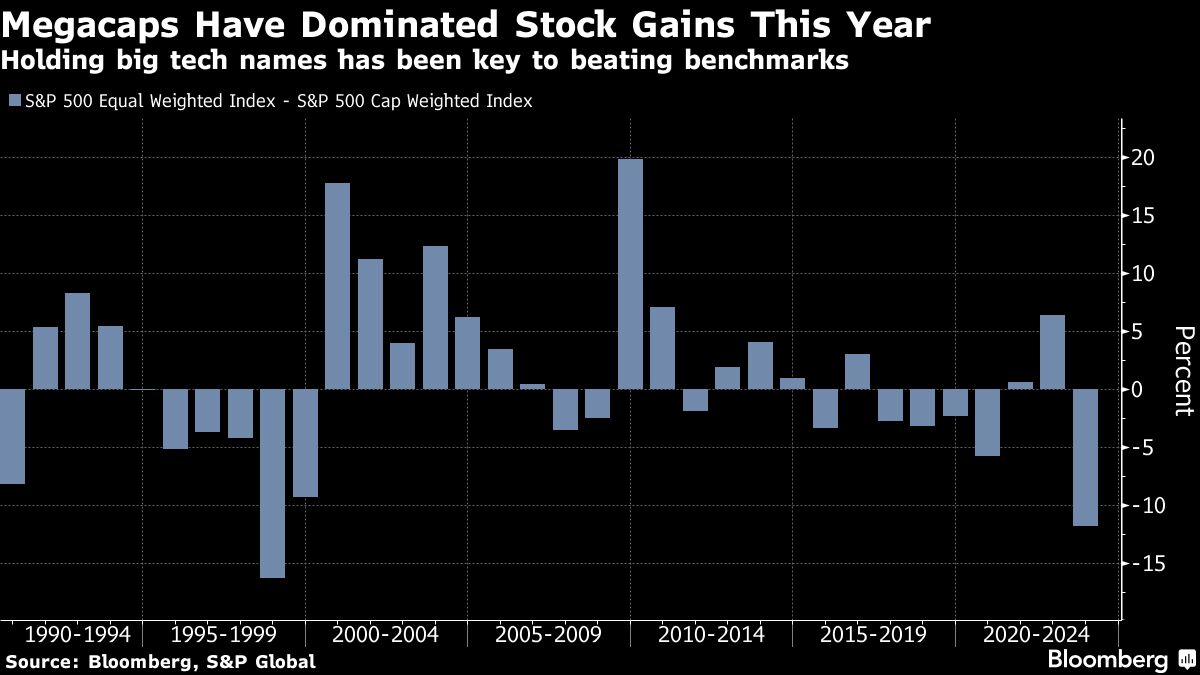What You Must Know
- The fund supervisor combines an unwavering religion in entrepreneurs with sufficient paranoia to name their companies practically every day.
- His portfolio crew boils down its inventory picks to about two dozen corporations and rides nearly all of them to positive aspects.
For energetic managers, the maths is stark. Out of hundreds of mutual funds, actually just one beat the Nasdaq 100 during the last 5, 10 and 15 years. It did so by boiling down inventory picks to about two dozen corporations and using nearly all of them to positive aspects.
Ron Baron, the 80-year-old Wall Road veteran who nonetheless oversees the fund, says his secret is combining an unwavering religion in entrepreneurs like Elon Musk with simply sufficient paranoia to name companies in his portfolio nearly every single day to verify nothing is amiss.
However Baron’s success belies the truth that for many inventory pickers, beating market indexes by betting huge on a number of names is a method with exceedingly dismal odds. That’s very true on this tech-powered period of the Magnificent Seven.
The overwhelming majority of such efforts will most likely crash and burn, in response to a brand new paper by former New York College professor and quant supervisor Antti Petajisto. Why? As a result of the market coughs up too few successful shares for the tactic to succeed besides in uncommon instances.
The futility of taking part in in opposition to benchmarks just like the Nasdaq 100 was underlined in a report final month by Bloomberg Intelligence, then bought a widespread public airing by investor Chamath Palihapitiya, who stated indexes offered superior positive aspects “with out you having to do any work or diligence.”
Seems mind and arduous work are fairly ineffective, too, due to dynamics which have more and more come to dominate the active-management debate.
“Concentrated inventory positions are considerably extra prone to underperform than to outperform the inventory market as a complete over the long run,” wrote Petajisto, at the moment head of equities at Brooklyn Funding Group. “Making an attempt to gamble on figuring out these few shares with outsized returns can be a nasty concept.”
Even in a U.S. market that has risen sixfold for the reason that international monetary disaster, the variety of shares that has matched that benchmark return may be pitifully few. The truth is, over the previous century, the median 10-year return among the many 3,000 largest U.S. shares has lagged the broader market by 7.9 share factors, in response to the paper.
The development would possibly even be intensifying within the winner-takes-all fashionable financial system. Whereas the Russell 3000 is up 15% in 2023, the median return is a few 0.7% drop. Just a little greater than half of the constituents are down.
In one other signal of mega-cap energy, an equal-weighted model of the S&P 500 has trailed the common value-weighted one by 12 share factors this 12 months, on monitor for the worst underperformance since 1998.
That places energetic managers in a bind. Hug the index and you’ll’t justify your increased charges. Deviate from it and also you threat lacking out on the massive positive aspects of, say, Nvidia Corp. or Tesla Inc.

Predictably, a bigger portion of managers that held all Magnificent Seven shares beat their benchmarks on a one-year foundation, writes David Cohne, a Bloomberg Intelligence analyst. However this wasn’t all too widespread: Simply 18% of 971 mutual funds owned all seven names whereas 21% held none of them.
“Beating benchmarks, underpinned by those self same seven shares, required managers to make different fortuitous picks,” he says in a notice.